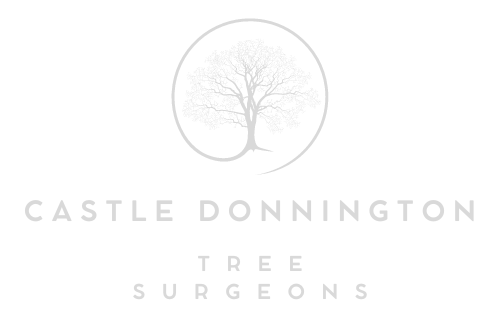When Tree Felling Becomes Inevitable: Signs You Shouldn’t Ignore
Trees add beauty, shade, and value to any property, but there are times when the responsible choice is to remove a tree for safety, health, or practical reasons. Recognising the signs that tree felling has become inevitable can help prevent accidents and protect the surrounding landscape. At Castle Donnington Tree Surgeons, we understand the importance of proactive tree management and provide professional tree felling services to keep properties in Castle Donnington, Leicestershire, safe and visually appealing.
Below, we outline the key signs that indicate a tree may need to be removed, along with the dangers of DIY tree felling and the importance of hiring professionals.
Signs That Tree Felling is Necessary
- Visible Signs of Decay and Disease
Trees are susceptible to various diseases, including fungal infections, blights, and rot, which can spread rapidly and weaken the structure of the tree. Signs such as discoloured leaves, powdery mildew, or fungal growth around the base of the trunk often indicate a problem. If left untreated, these issues can cause branches or the entire tree to become brittle, increasing the risk of it falling unexpectedly.
Why It Matters
A diseased tree poses a risk to the safety of people, buildings, and surrounding plants. If you observe these signs of decay, it’s essential to consult a professional tree surgeon who can assess whether the tree can be saved or if removal is the safest course of action. - Leaning or Unstable Trunk
While some trees naturally lean due to growth patterns, a sudden tilt or an increase in leaning could signal an underlying structural problem. Leaning may result from root damage, soil erosion, or other environmental factors that weaken the base of the tree. Over time, a leaning tree can become increasingly unstable and may be at risk of toppling in high winds or heavy rain.
Why It Matters
A leaning tree is a serious safety hazard, especially if it’s positioned close to structures, paths, or high-traffic areas. When a tree starts to lean suddenly or at an unusual angle, it’s advisable to have a professional inspect it immediately. - Extensive Deadwood
Deadwood is a common sign of an unhealthy or dying tree. While minor deadwood can be safely pruned, large sections of dead branches throughout the tree indicate significant health issues. Dead branches become brittle and are more likely to break off, especially in adverse weather.
Why It Matters
Deadwood is hazardous, as it can unexpectedly fall and cause injury or damage to nearby property. Regular inspections and timely removal of dead branches or, in severe cases, the entire tree, help to reduce risks and keep your garden safe. - Root Damage
The roots provide stability and nourishment to a tree, and any damage to the root system can severely impact the tree’s health and stability. Construction projects, changes in soil levels, and fungal infections can all damage roots. Symptoms of root damage include thinning foliage, leaf discolouration, and visible roots that are cracked, decayed, or exposed.
Why It Matters
Compromised roots undermine a tree’s structural integrity and can lead to sudden falls. If root damage is suspected, professional tree surgeons can assess the extent of the damage and determine whether tree felling is necessary to prevent further complications. - Insect Infestations
A severe insect infestation can contribute to tree decline by damaging wood and leaves, leading to decay and weakness. Pests such as wood-boring beetles, carpenter ants, and aphids can infest a tree’s structure, particularly when it’s already vulnerable. Evidence of an infestation includes holes in the bark, sawdust-like material at the base, or increased bird activity around the tree as they hunt for insects.
Why It Matters
Infested trees are at a higher risk of collapse as the insects weaken the wood from within. Professional intervention may be needed to assess the infestation and determine if removal is the best option to prevent the pests from spreading to other plants.
The Dangers of DIY Tree Felling
Attempting to fell a tree yourself may seem like a cost-effective solution, but it poses significant dangers and challenges. Tree felling requires specialised equipment, skill, and knowledge of tree behaviour to ensure safe and controlled removal. Without the expertise of trained tree surgeons, DIY felling can result in:
- Unpredictable Falls: Trees don’t always fall where expected, especially without proper cuts and techniques. This can lead to injuries or damage to property.
- Injury from Heavy Equipment: Chainsaws, ropes, and other equipment used in tree felling require skill to handle safely.
- Damage to Surrounding Landscape: Incorrect felling can lead to collateral damage to surrounding trees, plants, or structures.
By working with professional tree surgeons, you ensure that the tree removal process is completed safely, efficiently, and with minimal impact on your garden.
Conclusion: Why Professional Tree Felling with Castle Donnington Tree Surgeons is the Best Choice
Recognising the signs that tree felling is inevitable can help protect your property and loved ones from harm. At Castle Donnington Tree Surgeons, we’re committed to providing safe, effective, and environmentally-conscious tree felling services for residents in Castle Donnington, Leicestershire. Our team of skilled professionals uses industry-best practices and advanced equipment to remove trees carefully and responsibly.
If you’re concerned about the condition of a tree on your property, contact us today for a consultation. With Castle Donnington Tree Surgeons, you can trust that your garden’s health and safety are in expert hands. Let us help you maintain a beautiful and safe outdoor space for years to come.
Call us on: 01332 215 696
Click here to find out more about Castle Donnington Tree Surgeons
Click here to complete our contact form and see how we can help with your tree’s needs.

